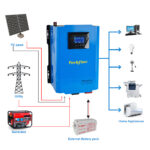Technology Requirements of Your New Career
Technology is essential to success in the modern workplace. It doesn’t matter if you’re applying to develop software, write marketing content, or manage a warehouse, technology is going to factor into the equation.
Regardless of the career or industry, one of the top challenges that continues to endure revolves around overcoming that initial hurdle of landing a job. Here are a few typical technology requirements that can help you increase your chances of success as you start applying to jobs in virtually any modern field.

Image Source: Pexels
Cover the Tech Basics
First thing’s first. If you want to succeed in the modern job hunt, you absolutely must equip yourself with the right technological tools, starting with your hardware. This isn’t just true for someone with an IT-related degree. It’s a critical part of any 21st-century job.
For instance, an academically-focused college professor must publish work, instruct students, and develop curricula. All of these activities require technology, particularly with virtual classrooms and remote-learning becoming so common.
Regardless of your field or industry, you’re going to want to have quality versions of each of the following pieces of hardware ready to go before you start the job hunt:
- A computer or laptop.
- Headphones.
- A microphone.
- A smartphone.
Additionally, if you’re one of the 21 million Americans who still lack regular access to broadband connectivity, take steps to set up steady and secure internet access. This is essential in keeping you connected and, by extension, facilitating your job application efforts.
By equipping yourself with the basic hardware and a stable, quality internet connection, you’ll be able to apply to jobs, attend interviews, and respond to communications in a timely and efficient manner. Being familiar with remote-work equipment of this nature will both demonstrate your communication skills and show that you can operate in a modern workspace.
Give Your Application Documentation a Digital Overhaul
Along with addressing the hardware, it’s also important to hone your digital application tool kit. Gone are the days when printed, hand-stapled copies of a resume, portfolio, or really any other application documentation were necessary. Now, you can utilize technology to set up a set of digital documents that can streamline your application activity and make it look more professional at the same time. For instance, you can:
- Create a central folder to house all of your digital documents. Use an application like Google Drive or Dropbox that is cloud-based and can be easily accessed from your computer or smartphone in any location.
- Update and replicate your resume. Make Google Doc, Word Doc, and PDF versions of your resume to have any one of them ready when you apply (often specific file types are required in an application).
- Pull together an online portfolio that provides instant access to a variety of samples of your past work. For instance, if you’re pursuing an IT career and you’ve taken the time to learn MySQL, jQuery, and Angular, use your portfolio to demonstrate your coding skills.
As a final note on digital documentation, remember to use wording and format with your resume, in particular, that will help your documents pass initial screenings from applicant tracking systems (ATS). Always include relevant industry keywords throughout your resume.
You may want to consider making a digital copy and then tailoring it for each job application, as well. This way you can even include keywords that aren’t just industry-specific, but even job-specific.
Newer developments in ATS systems have also made keyword context increasingly important. So make sure your resume flows and makes sense for the reader as well.
Establishing Your Technical Networking Tools
It’s also important to tap into technology to increase your networking efforts. A staggering 40% of hires come from referrals, making it critically important to stay in touch with peers and professionals in your field.
During the social-distanced COVID-19 era, this has made things like video chats, texting, email, phone calls, and even applications like Slack extremely relevant technical tools to keep on hand.
In addition to tools like Slack, LinkedIn has become not just a premier tech networking tool, but a near-literal lifeline to remaining relevant. Take the time to perfect your LinkedIn profile so that it can help you both stay in touch and give off a good impression in your networking efforts.
Staying Organized By Building Your Personalized Tech Stack
Typically, a tech stack refers to the technology used to create a single application. When it comes to your job application efforts, create your own personalized “tech stack” as well.
As you pull together things like digital documentation, networking tools, online portfolios, and tech hardware, take the time to organize all of it into your job-seeking stack of technical tools. List out every piece of tech that you’re using and then regularly go over it to ensure that everything remains organized and up to date. If you can keep your technology on point, you’ll be able to put your best foot forward in every step of the job-seeking process.
















